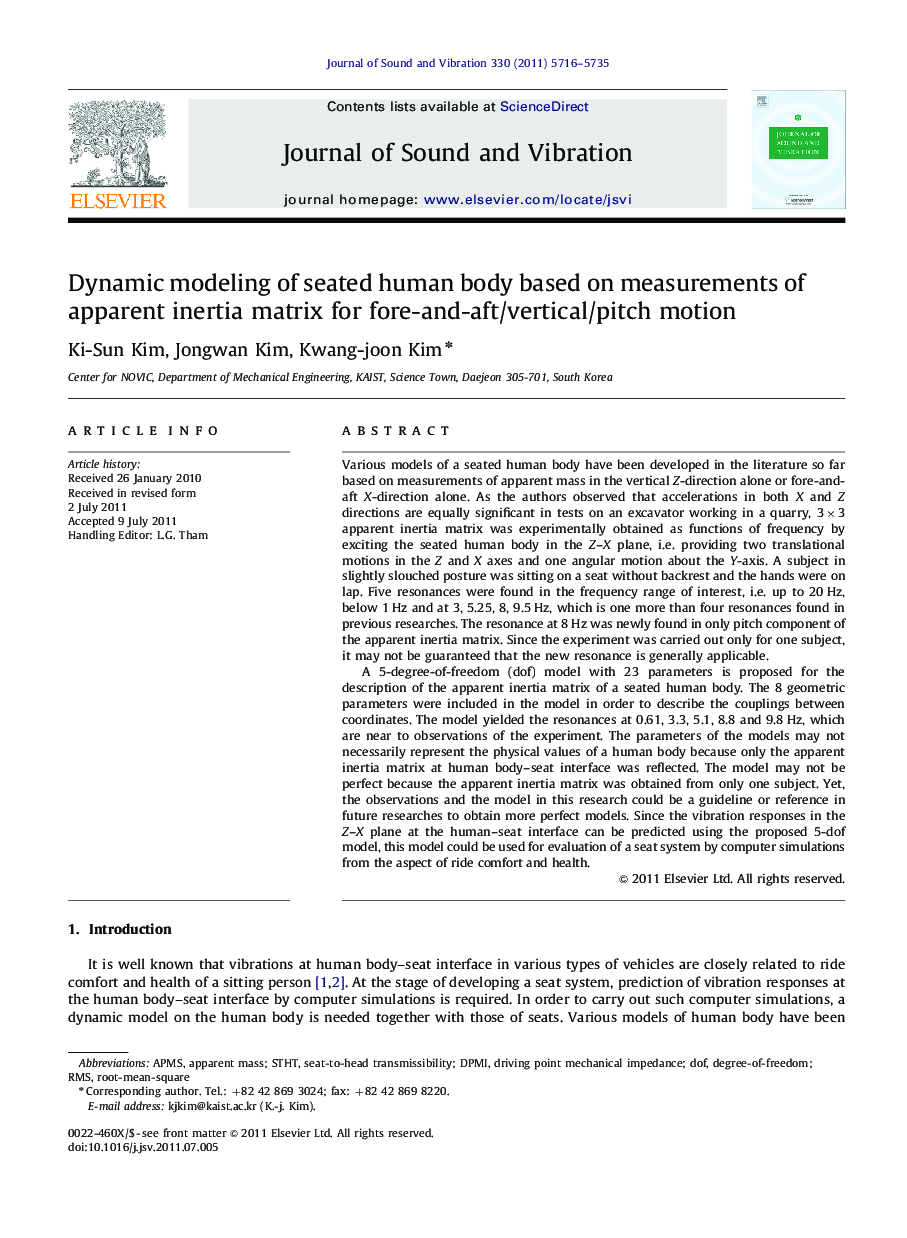| کد مقاله | کد نشریه | سال انتشار | مقاله انگلیسی | نسخه تمام متن |
|---|---|---|---|---|
| 288387 | 509620 | 2011 | 20 صفحه PDF | دانلود رایگان |

Various models of a seated human body have been developed in the literature so far based on measurements of apparent mass in the vertical Z-direction alone or fore-and-aft X-direction alone. As the authors observed that accelerations in both X and Z directions are equally significant in tests on an excavator working in a quarry, 3×3 apparent inertia matrix was experimentally obtained as functions of frequency by exciting the seated human body in the Z–X plane, i.e. providing two translational motions in the Z and X axes and one angular motion about the Y-axis. A subject in slightly slouched posture was sitting on a seat without backrest and the hands were on lap. Five resonances were found in the frequency range of interest, i.e. up to 20 Hz, below 1 Hz and at 3, 5.25, 8, 9.5 Hz, which is one more than four resonances found in previous researches. The resonance at 8 Hz was newly found in only pitch component of the apparent inertia matrix. Since the experiment was carried out only for one subject, it may not be guaranteed that the new resonance is generally applicable.A 5-degree-of-freedom (dof) model with 23 parameters is proposed for the description of the apparent inertia matrix of a seated human body. The 8 geometric parameters were included in the model in order to describe the couplings between coordinates. The model yielded the resonances at 0.61, 3.3, 5.1, 8.8 and 9.8 Hz, which are near to observations of the experiment. The parameters of the models may not necessarily represent the physical values of a human body because only the apparent inertia matrix at human body–seat interface was reflected. The model may not be perfect because the apparent inertia matrix was obtained from only one subject. Yet, the observations and the model in this research could be a guideline or reference in future researches to obtain more perfect models. Since the vibration responses in the Z–X plane at the human–seat interface can be predicted using the proposed 5-dof model, this model could be used for evaluation of a seat system by computer simulations from the aspect of ride comfort and health.
► We obtain the apparent inertia matrix in Z–X plane from a sitting subject.
► Five resonances are found below 1 Hz and at 3, 5.25, 8 and 9.5 Hz.
► The resonance at 8 Hz is newly found in angular term of the apparent inertia matrix.
► We propose the 5-dof model by curve-fitting to the apparent inertia matrix.
► The model can be used for testing a seat from the aspect of ride comfort and health.
Journal: Journal of Sound and Vibration - Volume 330, Issue 23, 7 November 2011, Pages 5716–5735